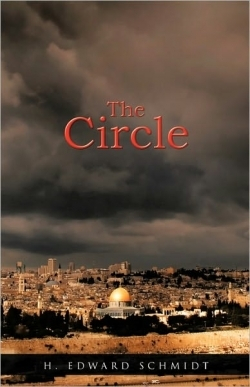
The Circle
War has bloodied Israel’s soil for millennia. With The Circle, Edward Schmidt offers those inured to the cruel history and constant reports of violence a different view.
Set in the early 1900s, Arach and Rivka Poletsky, and their children Sarah and Yitzhak, have fled the Russian pogroms raging after the czar’s assassination*.* Arach arrives in Palestine to work for the Jewish National Fund, an organization buying land for Jewish immigrant settlers, all in quest of the Zionist homeland: Israel made whole after 2,000 years.
The author, once employed by the Congressional Research Service, has an astounding knowledge of the twentieth century history of the area. He writes intelligently about the Ottoman Empire and its oppressive occupation; the Arabic guerrilla campaign inspired and led by Lawrence; and the twisted logic of the Balfour Declaration. Schmidt notes Jewish immigrants—and British occupiers—seized on one provision of the declaration to the detriment of Arabs:
His Majesty’s Government views with favor the establishment in Palestine of a National Home for the Jewish people, and will use such endeavours to facilitate the achievement of this object…
Schmidt notes the protection afforded non-Jews in the document that came to nothing.
It being clearly understood that nothing shall be done which will prejudice the civil and religious rights of the existing non-Jewish communities in Palestine …
The Circle relates the wrongs done to Arabs by the Turks, British, French, and immigrant Jews but overlooks the origins of the Diaspora and the bigotry and injustices inflicted on the Jews thereafter. Conversely, Schmidt does not allow the Arabic peoples escape without criticism, characterizing them then as driven by “… selfish concerns for their own families, clans, and tribes.”
Jewish immigrants, then a minority, had access to money, organizational skills, and a vision of Israel as a homeland. While many Arabs operated from parochial interests, immigrant Jews banded together to support Jewish interests. Arabs rightfully suspected discrimination, but there were more than economic interests involved. The choice was “… grounded on the conviction that the Jews of the Diaspora must rebuild Eretz Israel with their own hands, not as overseers.”
The Circle takes place in the early 1900s. The primary characters are Yitzhak Poletsky, fighting for the Zionist cause, and Ismael Latif, a soldier in Lawrence’s expeditions who expected the British to support a free Arab state. The conflict is personal because Yitzhak and Ismael were boyhood friends, deeply committed to one another. There are assassinations, bombings, and duplicities. There are good people doing bad things, and bad people acting selfishly. It makes for a powerful story.
Readers familiar with the Bible will see irony in the two protagonists carrying the names of the sons of Abraham, the father-prophet honored by Muslim and Jew. There is further irony in a key point of the narrative being set in Nazareth where the two cultures are in dispute over lands held by Arabs, and important to the town’s culture and livelihood, which has been sold to the Jewish National Trust to be used as a *kibbutz—*a collective settlement.
Historical figures walk the pages of The Circle, all in an entirely believable manner. There is David Ben-Gurion, and Lawrence himself, who comes across less appealing than rendered in the popular film.
Schmidt’s writing style is straightforward, marred only by his tendency to capitalize the word “major” when used as an adjective, but the depth of his research and knowledge—and the story itself—make for excellent reading.
Reviewed by
Gary Presley
Disclosure: This article is not an endorsement, but a review. The publisher of this book provided free copies of the book and paid a small fee to have their book reviewed by a professional reviewer. Foreword Reviews and Clarion Reviews make no guarantee that the publisher will receive a positive review. Foreword Magazine, Inc. is disclosing this in accordance with the Federal Trade Commission’s 16 CFR, Part 255.
